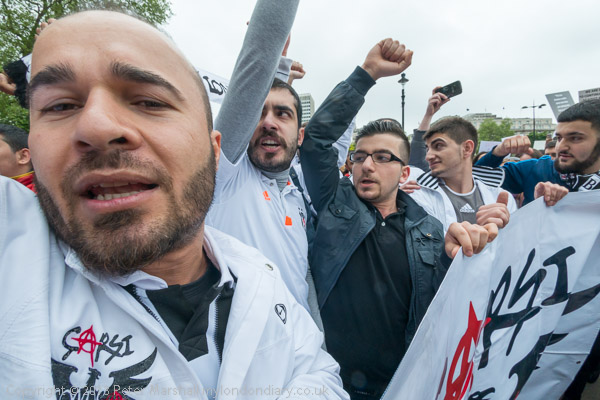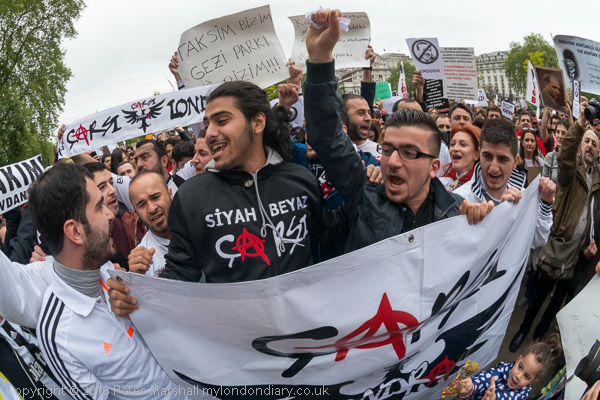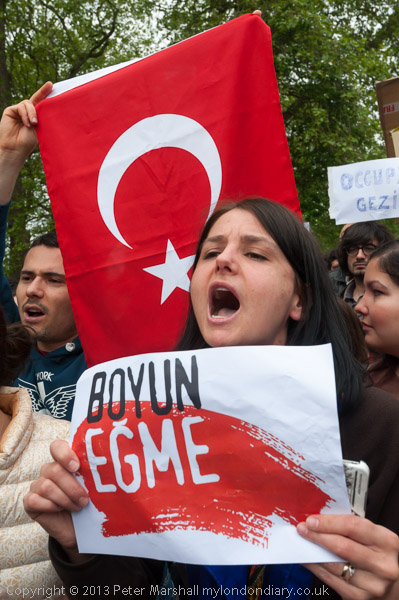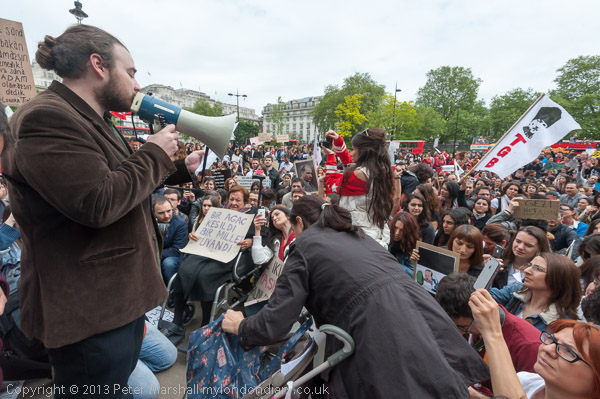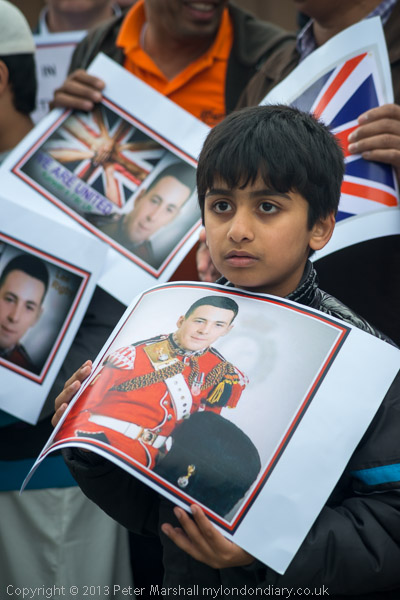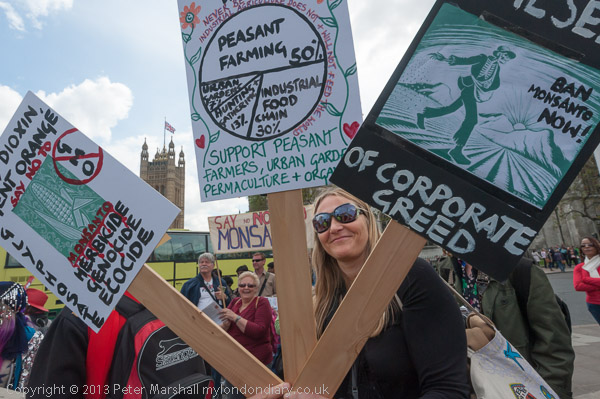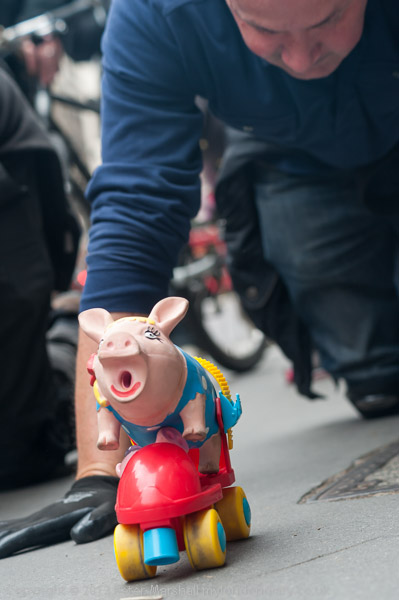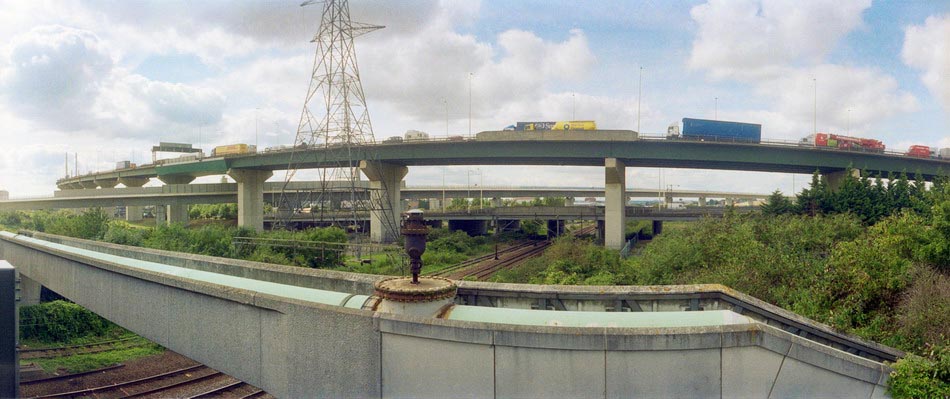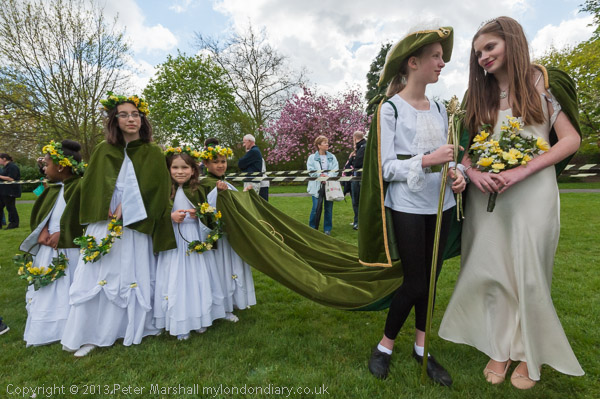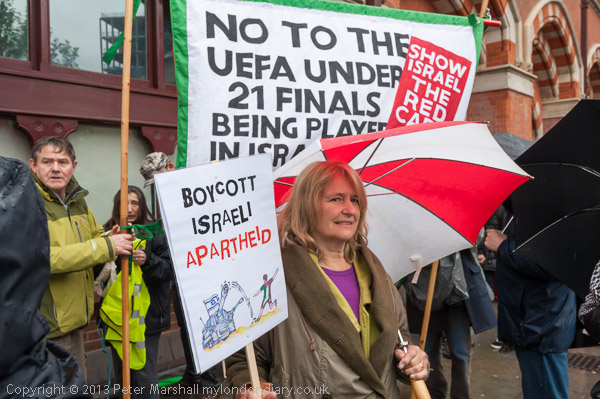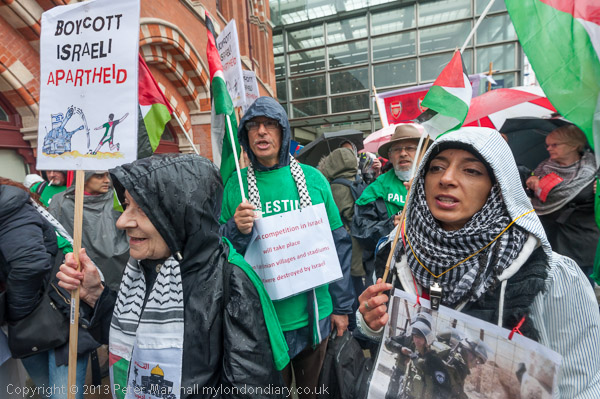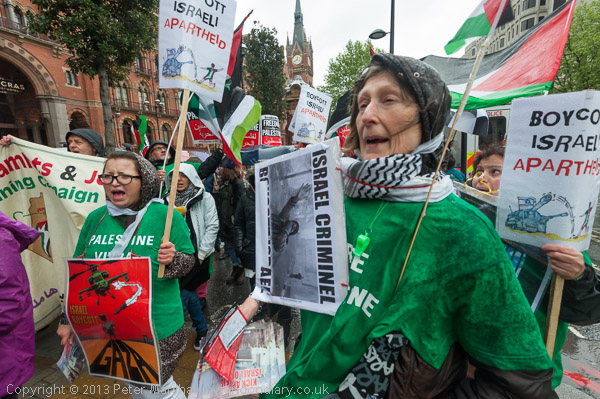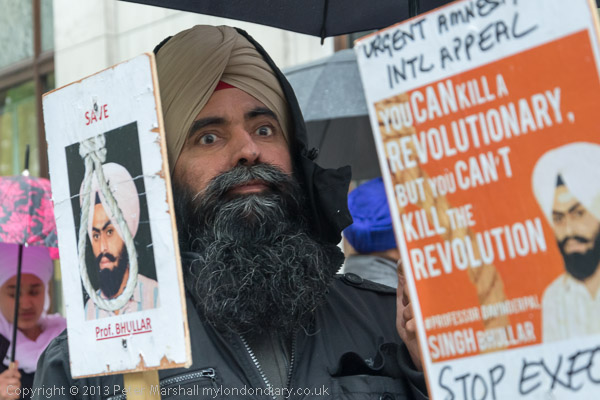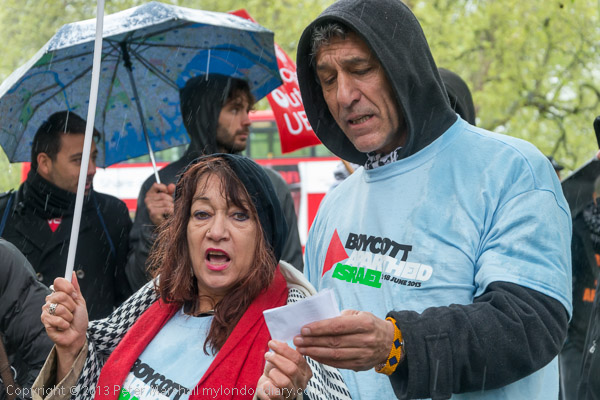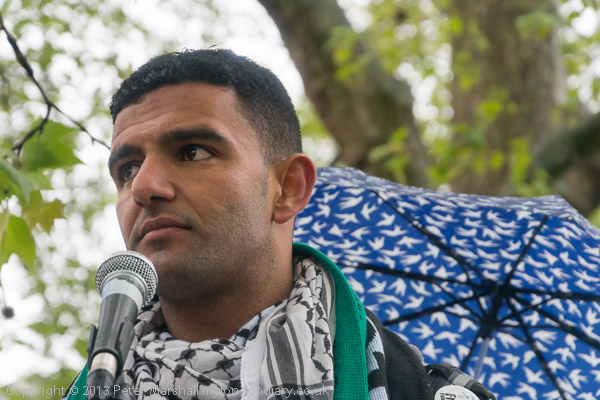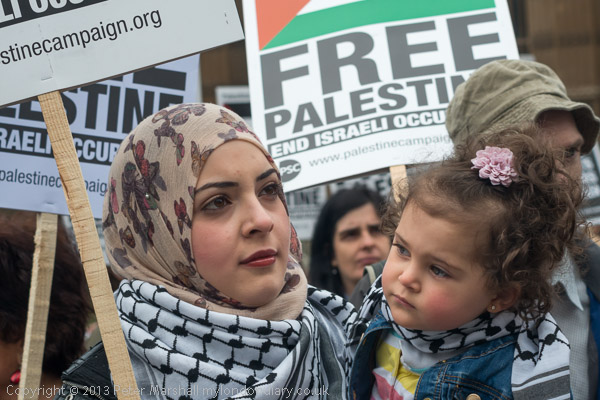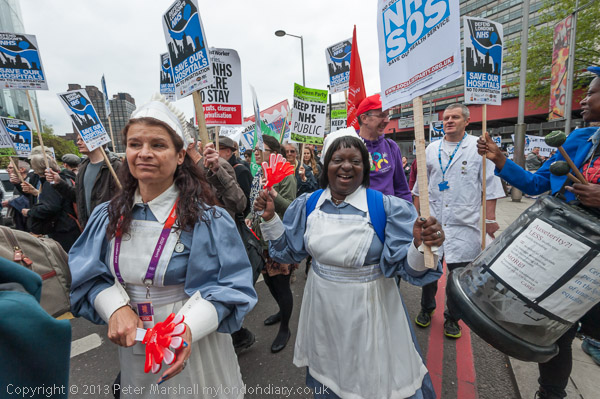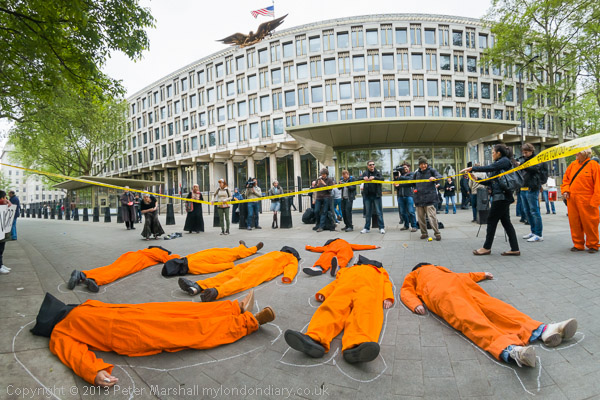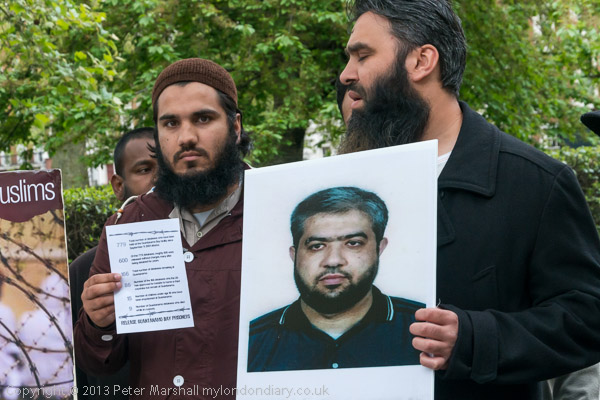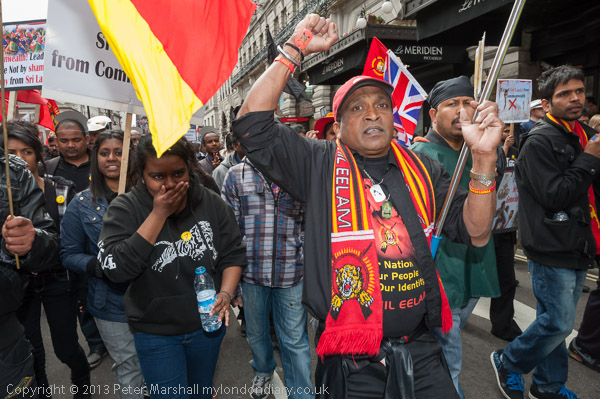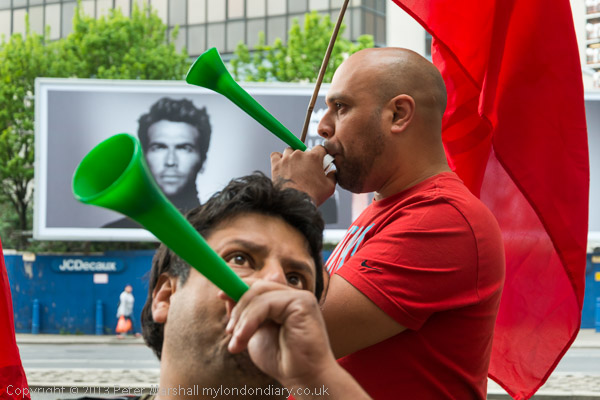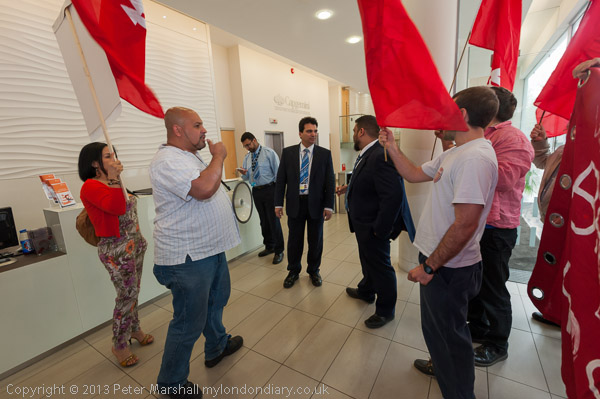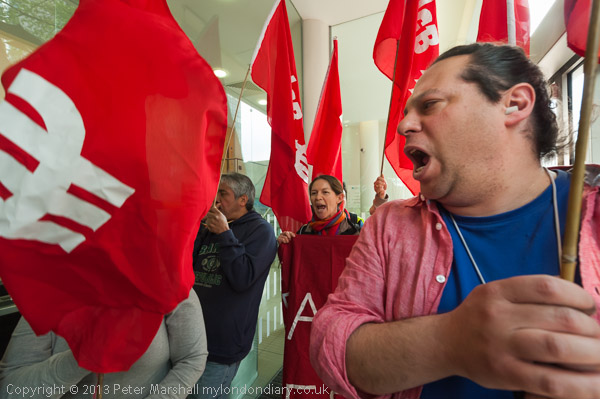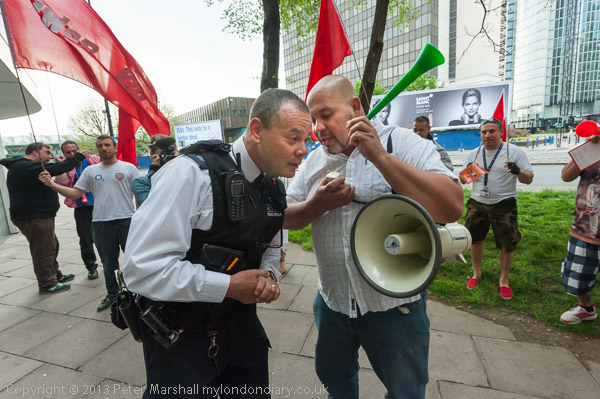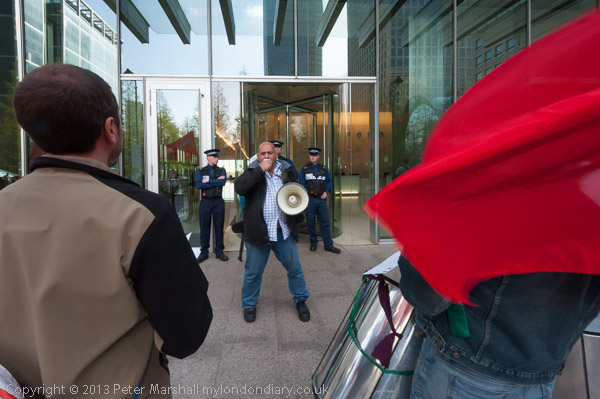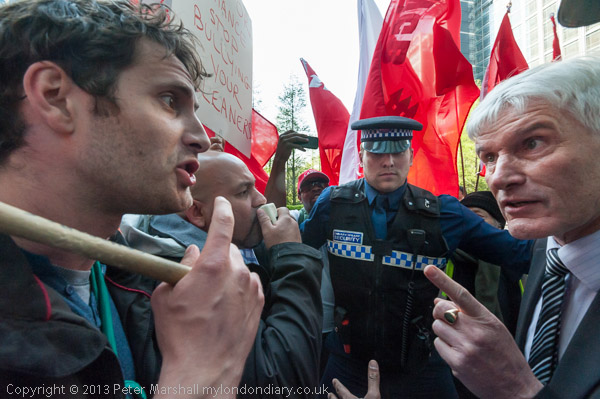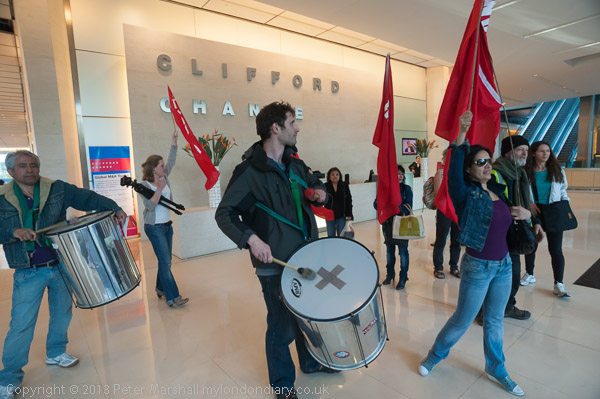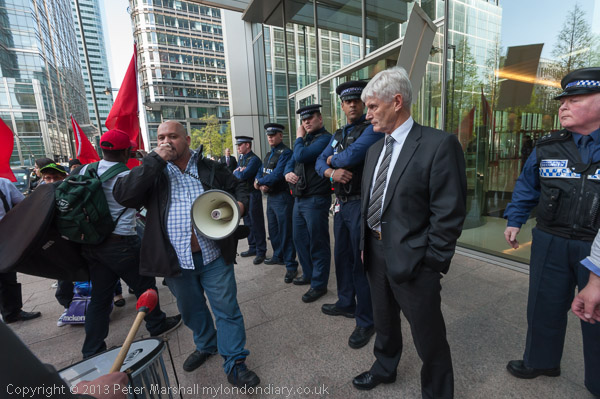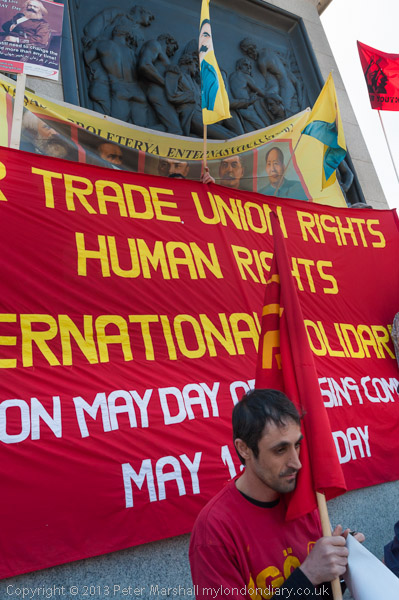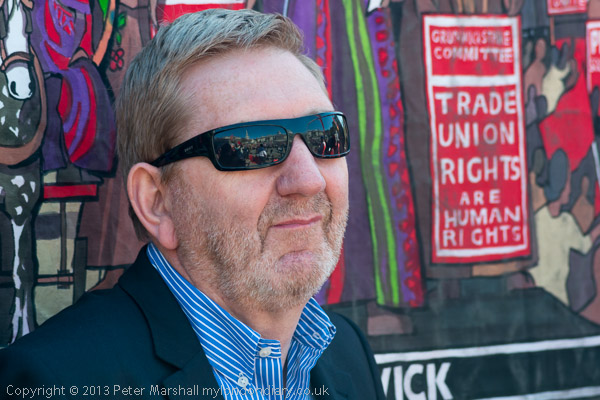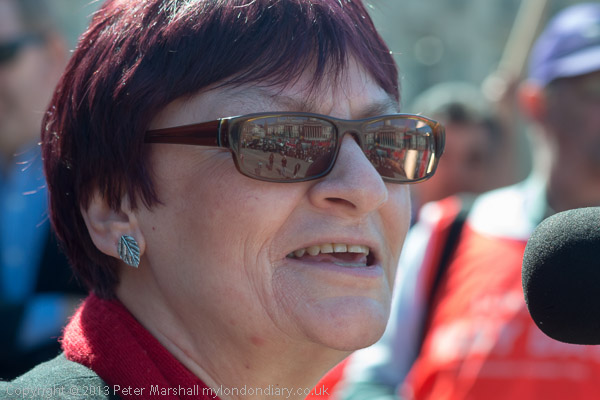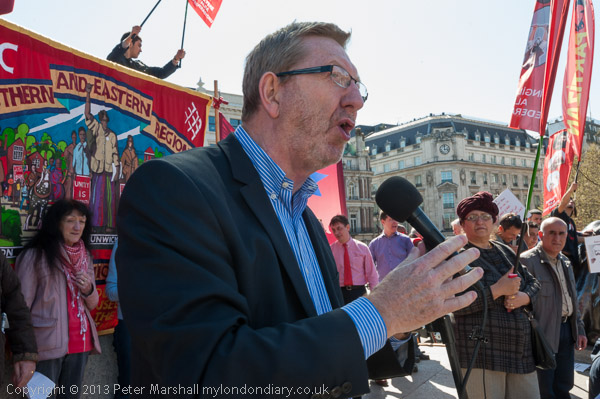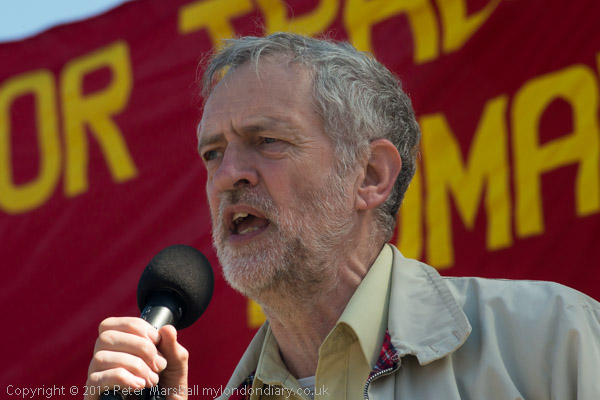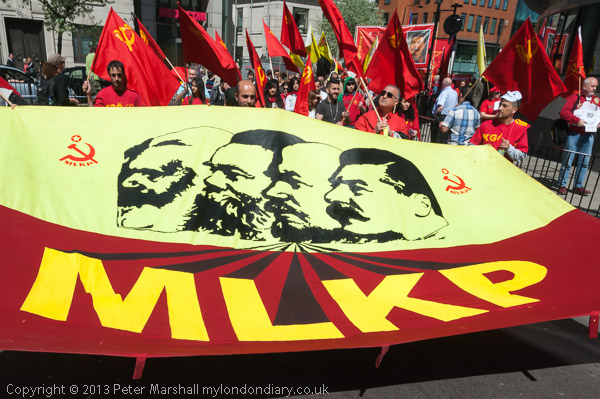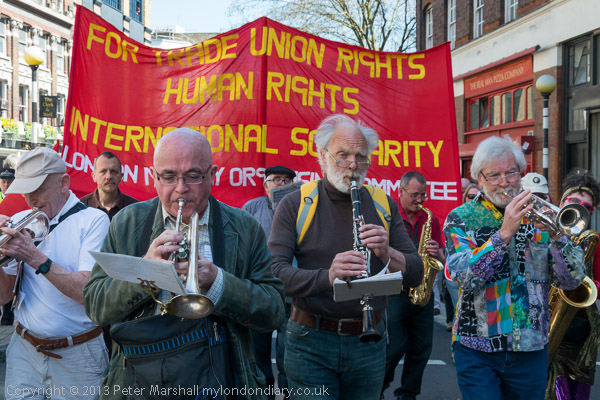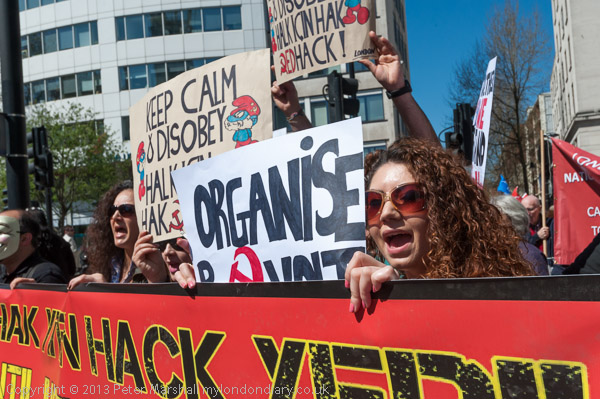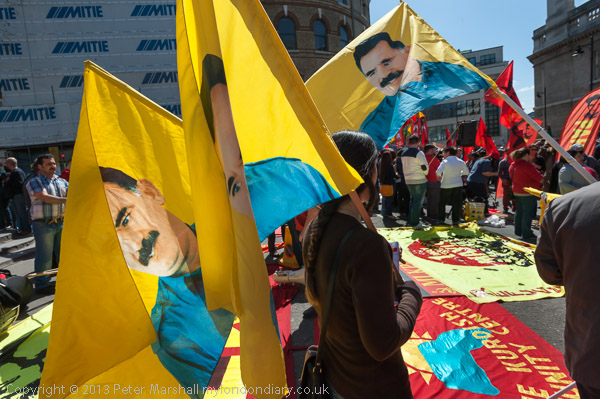Sometimes it’s the job of photographers to look under unpleasant stones and I felt this was one of them as I walked into a rather small and disconsolate looking group of the British National Party supporters on College Green. It isn’t often I agree with David Cameron, reported by the Daily Telegraph “If you vote for the BNP you are voting for a bunch of fascists … They dress up in a suit and knock on your door in a nice way but they are still Nazi thugs.”
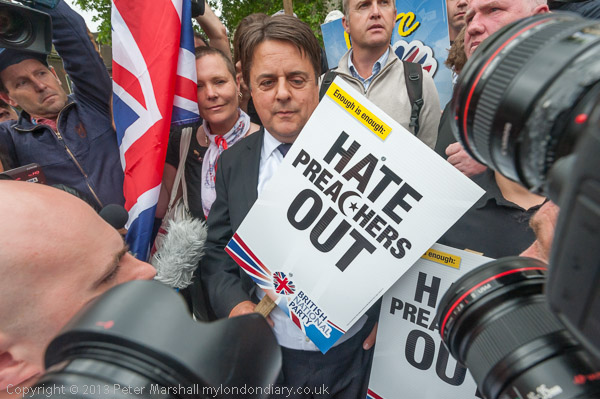
In the middle of a media scrum, their leader Nick Griffin was being interviewed and photographed, and I joined the throng. What I heard did nothing to improve my opinion of his ideas. At first I was a little way back in the crowd, but as others moved away I gradually moved forward, still surrounded by others with cameras.
Rather than use a longer lens and frame just him and the placard I took a few frames showing the media interest – above with the D700 and 16-35 at 19mm. At ISO 800, working on P gave me 1/400 f10, enough depth of field to get everything but the foreground lenses sharp, and the shutter speed fast enough to work where there was a little unavoidable pushing from the photographers around me. I was happy (and a little lucky) with the framing.
Gradually as other photographers had got their pictures and moved out I got closer, really too close, and took other pictures – which you can see at BNP Exploiting Woolwich Killing Stopped and then Griffin started moving around and talking to a few of his supporters – and getting stopped for more video interviews.
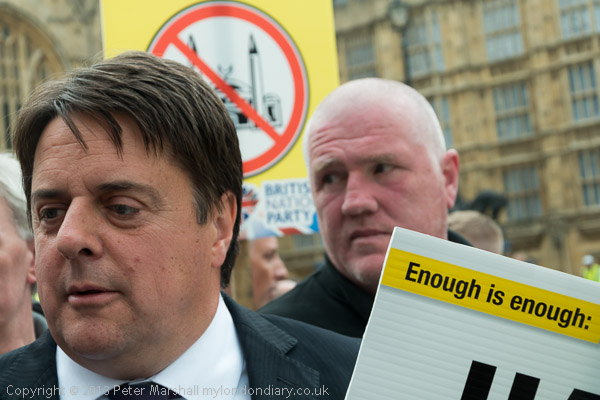
I wanted to take some pictures that showed clearly where he was, with Parliament in the background, and was able to use a longer lens – the 18-105mm DX at 50mm (75mm equiv – a ‘portrait lens’) on the D800E. I was pleased to be able to have the clearly anti-Islamic placard – with its ‘no mosque’ motif behind him (though it could have been more visible), along with the slightly blurred and perhaps a little sinister face of a supporter to his right, and the message ‘Enough is enough’. The image on the web is perhaps a little too dark.
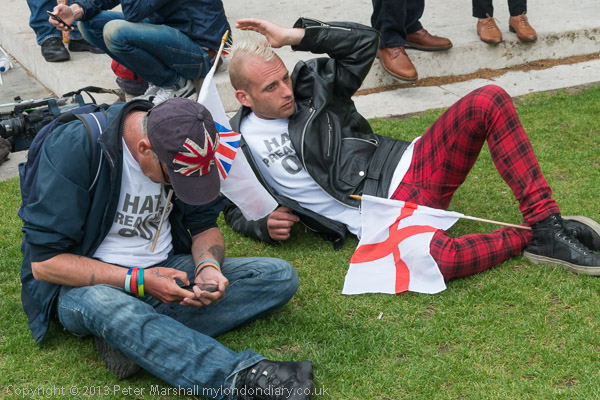
I’d also photographed some of the other BNP members at the protest, though some were not too keen to be photographed, and turned away. But by the time they did so I’d usually already taken their pictures. Some were more relaxed about it, and I had a few fairly normal conversations with some of those I photographed.
But the main story was that the BNP had been prevented from marching by anti-fascists, various groups and individuals who had come to Westminster determined to stop the BNP making capital out of the killing of Lee Rigby. They were defying the police in blocking the road, and I photographed a number of them being arrested and led away to the waiting police vans and a couple of double-decker buses – some more dramatically than others.
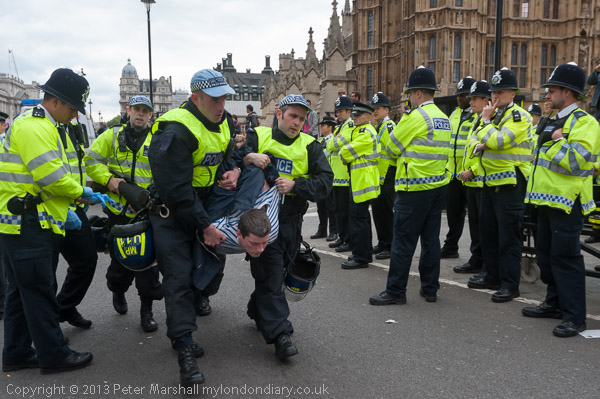
But although the police made a large number of arrests – and a few of them seemed to clearly enjoy a little sadistic arm-twisting and thumping of the protesters – I don’t think their heart was really in the job, and they didn’t feel moved to make a really great effort to let the fascists march.
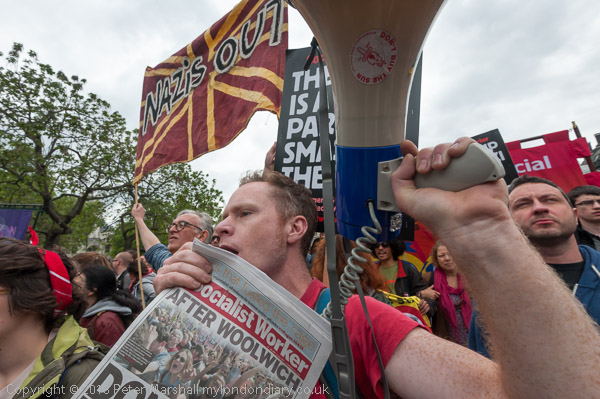
This was one picture of the anti-fascists that I particularly liked. The wide-angle (16mm) emphasizes the power of the arm holding the megaphone, the banner behind has the clear message ‘Nazis Out’ and the newspaper headline ‘After Woolwich’ adds the context. For me when I was taking the series of exposures that this came from, there was a definite feeling that I was photographing the re-enactment of a socialist realist poster, and I did so with some amusement. The image is full-frame, though possibly a very slight trim at the left and right edge might improve it.
There are some others I thought weren’t bad too – you can see the rest at Anti-Fascists Stop BNP Wreath Laying.
